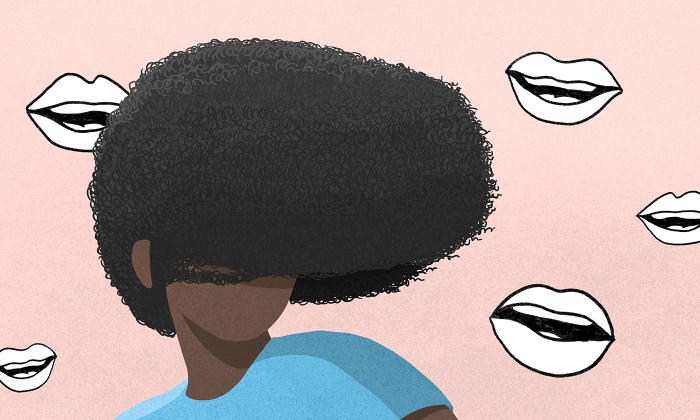For many of us, microaggressions are so commonplace that it seems impossible to tackle them one at a time. Psychologists often compare them to death by a thousand cuts.
The metaphor is both the subtitle to a paper that Kevin Nadal, professor of psychology at John Jay College, wrote about the impact of microaggressions on L.G.B.T.Q. youth, and the title of another paper on the health implications of black respectability politics by Hedwig Lee, professor of sociology at Washington University in St. Louis, and Margaret Takako Hicken, research assistant professor at the University of Michigan. The phrase is commonly found in additional studies on the topic.
I felt my thousandth cut a few Novembers ago standing outside a bar as my friend’s boyfriend explained to me the concept of American Thanksgiving. From the time in fourth grade when my teacher made me read the part of “slanted-eyed child” in a play to every time a stranger in the online dating world told me he “loves Asian women,” I have been pressed with the dilemma of how I should react to these seemingly small lacerations. Should I respond? Is it worth it?
When I tell people that I am writing about microaggressions, most — even some of my closest friends who are women of color — ask me why. It’s tempting to ignore microaggressions, considering blatant, obvious discrimination is still a real problem, but the buildup of these “everyday slights” has consequences on a victim’s mental and physical health that cannot be overlooked. The normalization of microaggressions is antithetical to a well-rounded society with equal opportunities for marginalized individuals.
So many of us ask the same questions: Was that really a microaggression? Is this worth tackling? What should I say and how should I cope? Or worse, we’ve convinced ourselves that the questions are not even worth asking. Dancing in circles myself, I weigh in with experts who have witnessed microaggressive acts and had them share their insights based on years of research and data.
What is a microaggression?
Originally coined in the 1970s by Chester M. Pierce, a Harvard psychiatrist, today’s definition of a microaggression can be credited to Derald Wing Sue, a professor of counseling psychology at Columbia University. Since 2007, he has written several books on microaggressions, including “Microaggressions in Everyday Life: Race, Gender, and Sexual Orientation.” In it, Dr. Sue writes that microaggressions are the everyday slights, indignities, put-downs and insults that members of marginalized groups experience in their day-to-day interactions with individuals who are often unaware that they have engaged in an offensive or demeaning way.
Microaggressions are often discussed in a racial context, but anyone in a marginalized group — be it as a result of their gender, sexual orientation, disability or religion — can experience one.
Microaggressions can be as overt as watching a person of color in a store for possible theft and as subtle as discriminatory comments disguised as compliments.
The first step to addressing a microaggression is to recognize that one has occurred and dissect what message it may be sending, Dr. Sue said. To question where someone is from, for instance, may seem fairly innocuous but implicitly delivers the message that you are an outsider in your own land: “You are not a true American.” Subtle actions, like a white person’s clutching a purse closer as a darker-skinned person approaches, are nonverbal assumptions of criminality and examples of microaggressions.
While there has been debate about the definition of microaggressions and how they should be addressed, Dr. Sue says their existence is impossible to dispute. “When I talk about the concept of microaggressions to a large audience of people of color and women, I’m not telling them anything new, but it provides them with a language to describe the experiences and the realization that they’re not crazy,” he said.
Recognize the real consequences of microaggressions
Discrimination — no matter how subtle — has consequences. In 2017, the Center for Health Journalism explained that racism and microaggressions lead to worse health, and pointed out that discrimination can negatively influence everything from a target person’s eating habits to his or her trust in their physician, and trigger symptoms of trauma. A 2014 study of 405 young adults of color even found that experiencing microaggressions can lead to suicidal thoughts.
For many members of marginalized groups, it is easy to believe that simply growing a thick skin will provide protection from these experiences. However, Dr. Nadal argues that the consequences of microaggressions are real, whether or not you believe yourself to be numb to them.
“Experiencing the spectrum of racism — from microaggressions to systemic oppression to hate violence, may negatively affect people whether someone is aware of it at all,” Dr. Nadal said. “If the person who committed the microaggression is in your life, it can always be worth bringing up. In the same way that a family member or friend may hurt you and it takes years to recover, the impact of a microaggression can be long-lasting too.”
Pick your battles
When discussing microaggressions, people from privileged backgrounds often say marginalized individuals are simply overreacting. Dr. Alisia G.T.T. Tran, an associate professor of counseling and counseling psychology at Arizona State University, disagrees. She says that most people actually ignore and shake off a lot of microaggressions. “They have no choice, they’re so common, and you can’t fight every battle — but these things can stay with you or build up,” she said. She and many other psychologists say that responding to a microaggression can be empowering, but with so many battles, how do you decide which to fight?
To help, Dr. Nadal developed a tool kit called the Guide to Responding to Microaggressions. It lists five questions to ask yourself when weighing the consequences of responding to a microaggression.
- If I respond, could my physical safety be in danger?
- If I respond, will the person become defensive and will this lead to an argument?
- If I respond, how will this affect my relationship with this person (e.g., co-worker, family member, etc.)
- If I don’t respond, will I regret not saying something?
- If I don’t respond, does that convey that I accept the behavior or statement?
Diane Goodman, a social justice and diversity consultant, says the process is unfair, but having to decide whether or not to take action is inevitable in today’s society. “The emotional labor should not have to fall on people from marginalized groups. In the real world, people are confronted with microaggressions and people need to decide what they want to do.”
Before moving forward with confronting the microaggression, she recommends you assess the goals of your response: Do you simply want to be heard? Or are you more interested in educating the other person and letting them know they did something wrong?
Microinterventions: Disarm a microaggression
Even once you have decided that you can respond to a microaggression, knowing what to say or how to behave can be nerve-racking. In his research on disarming microaggressions, Dr. Sue uses the term “microintervention” to describe the process of confronting a microaggression. “Unless adequately armed with strategies, microaggressions may occur so quickly they are oftentimes over before a counteracting response can be made,” he said.
While your response will vary by situation, context and relationship, Dr. Goodman recommends memorizing these three tactics from her list of prepared statements.
Ask for more clarification: “Could you say more about what you mean by that?” “How have you come to think that?”
Separate intent from impact: “I know you didn’t realize this, but when you __________ (comment/behavior), it was hurtful/offensive because___________. Instead you could___________ (different language or behavior.)”
Share your own process: “I noticed that you ___________ (comment/behavior). I used to do/say that too, but then I learned____________.”
One principle underlying these statements is helping the aggressor understand she or he is not under attack for their comment. “If we want people to hear what we’re saying and potentially change their behavior, we have to think about things that will not immediately make them defensive,” Dr. Goodman said.
How to respond to microaggressions in the digital space
It happens all the time — a friend of yours likes a racist comment on Facebook or a co-worker shares a meme with misogynist undertones. How can you respond when communicating online seems so visible and permanent?
According to research by Robert Eschmann, an assistant professor at Boston University’s School of Social Work, the visibility of microaggressions also means you can have like-minded allies step in to respond with you. “When you experience a microaggression when you’re by yourself,” Dr. Eschmann said, “there is no one else that can validate that experience for you. When you’re online, you can have lots of eyes on it and more people that can call it out and say that’s wrong.”
Another tactic Dr. Nadal suggests is to send links to articles that identify the microaggression. “It can be exhausting to have to explain microaggressions each time you encounter them; however, copying and pasting a link may be a simple tactic to use.” After you send the link and call out the microaggression, it is also important to identify when the person you are speaking to is actually open to a conversation.
Dr. Sue reminds us that so much of what happens online are monologues and not dialogues. “To me, responding to microaggressions online are a waste of time, because I don’t think — unless I have time to interact with the person on a personal level — I will be able to effect any change,” he said. Knowing when to step away and shut off the screen, especially when you sense a dead end, is crucial to self-care, he adds.
Choose self-care
Learning to draw boundaries and find support among allies is one of the most important steps in dealing with microaggressions.
For those looking for an immersive experience, one Psychology Today article suggests a process of radical healing — developing pride in your community, sharing stories with people from it and taking action to make changes on a local and political level, reflecting on the challenges of your ancestors and practicing self-care by staying healthy — physically and spiritually.
Self-care, however, can be as simple as having a few friends to discuss common experiences with. Shardé M. Davis, a professor of communication at the University of Connecticut, has studied supportive communication about microaggressions among groups of black women and finds that talking can facilitate the coping process. Although Dr. Davis’s study was limited to black women, she believes the spirit of what that represents could easily translate to other groups of people.
New York Times
More about: mircoagression
















































